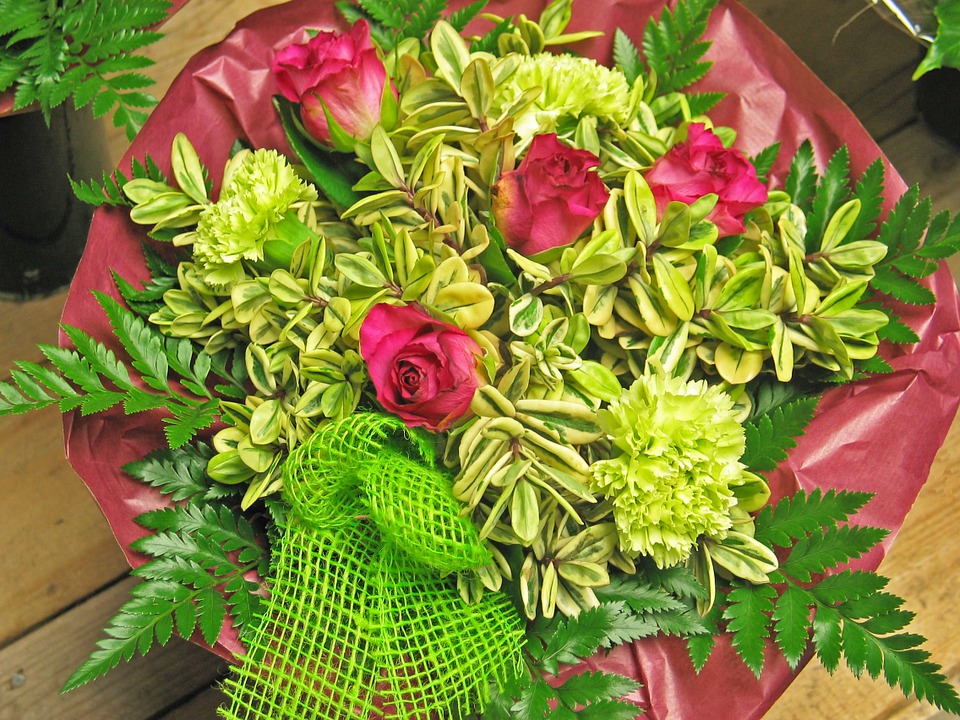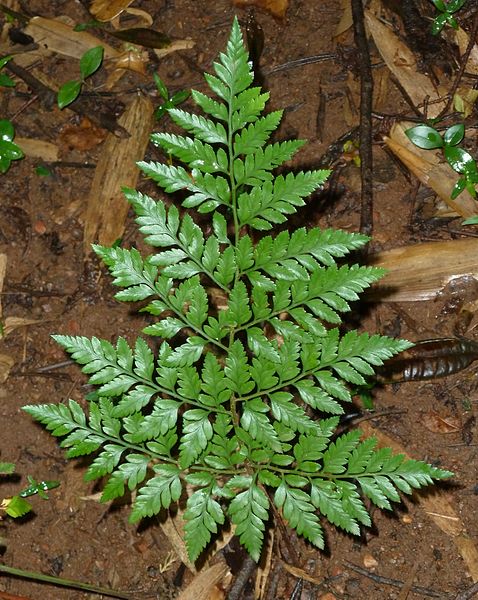by Piter Kehoma Boll
You may have seen parts of today’s fellow at least once in your life, as it is a very popular plant in flower arrangements.

Rumohra adiantiformis is how it is known by botanists, and common names include leatherleaf fern, seven-weeks fern and iron fern. This fern species is widely distributed in Australasia, southern Africa and the Neotropics, as well as several islands of the Pacific Ocean.
Living in forested areas, especially where there is not too much shade, the leatherleaf fern has a biology that is not very different from that of other ferns. It usually grows on the soil, although it may eventually occur on rocks or on trees. What makes this fern special is that its mature fronds are somewhat hard and, after being cut off, continue to have a green and live appearance for a very long time, usually several weeks. This amazing resistance to wilt makes it an ideal species to be used in flower arrangements.

Currently, most of the leatherleaf fern’s production for commercial use occurs in the state of Florida, USA, where it is cultivated in irrigated shaded nurseries. Other large producers are South Africa and Brazil, especially southern Brazil, but in these two countries the plant is exploited through extractivism, i.e., it is harvested in the wild and not cultivated. Although the extraction of the leatherleaf fern is a widespread activity in both South Africa and southern Brazil and is a major source of income for many families, it is illegal under national or regional laws. However, at least in southern Brazil, where the leatherleaf fern occurs in the highest recorded densities in the world, the main reason for its populations to be diminishing does not seem to be its extraction but rather natural forest succession. As forests grow older and become darker, they become unsuitable for the leatherleaf fern to grow.
It is, of course, necessary to establish limits for its harvest. Otherwise, its increasing demand in the florist market may end up causing concerning effects on its occurrence. The best alternative continues to be cultivating the fern, as it protects wild populations and allows the harvest of high-quality fronds and a faster recovery after defoliation.
– – –
– – –
References:
Geldenhuys CJ, van der Merwe CJ (1988) Population structure and growth of the fern Rumohra adiantiformis in relation to frond harvesting in the southern Cape forests. South African Journal of Botany 54(4): 351–362.
Milton SJ (1987) Growth of Seven-weeks Fern (Rumohra adiantiformis) in the Southern Cape Forests: Implications for Management. South African Forestry Journal 143: 1–4.
Souza GC, Cubo R, Guimarães L, Elisabetsky E (2006) An ethnobiological assessment of Rumohra adiantiformis (samambaia-preta) extractivism in Southern Brazil. Biodiversity and Conservation 15: 2737–2746. doi: 10.1007/s10531-005-0309-3
– – –
* This work is licensed under a Creative Commons Attribution-ShareAlike 3.0 Unported License.
This work is licensed under a Creative Commons Attribution-ShareAlike 3.0 Unported License.

Pingback: Sexta Selvagem: Samambaia-Preta | Natureza Terráquea